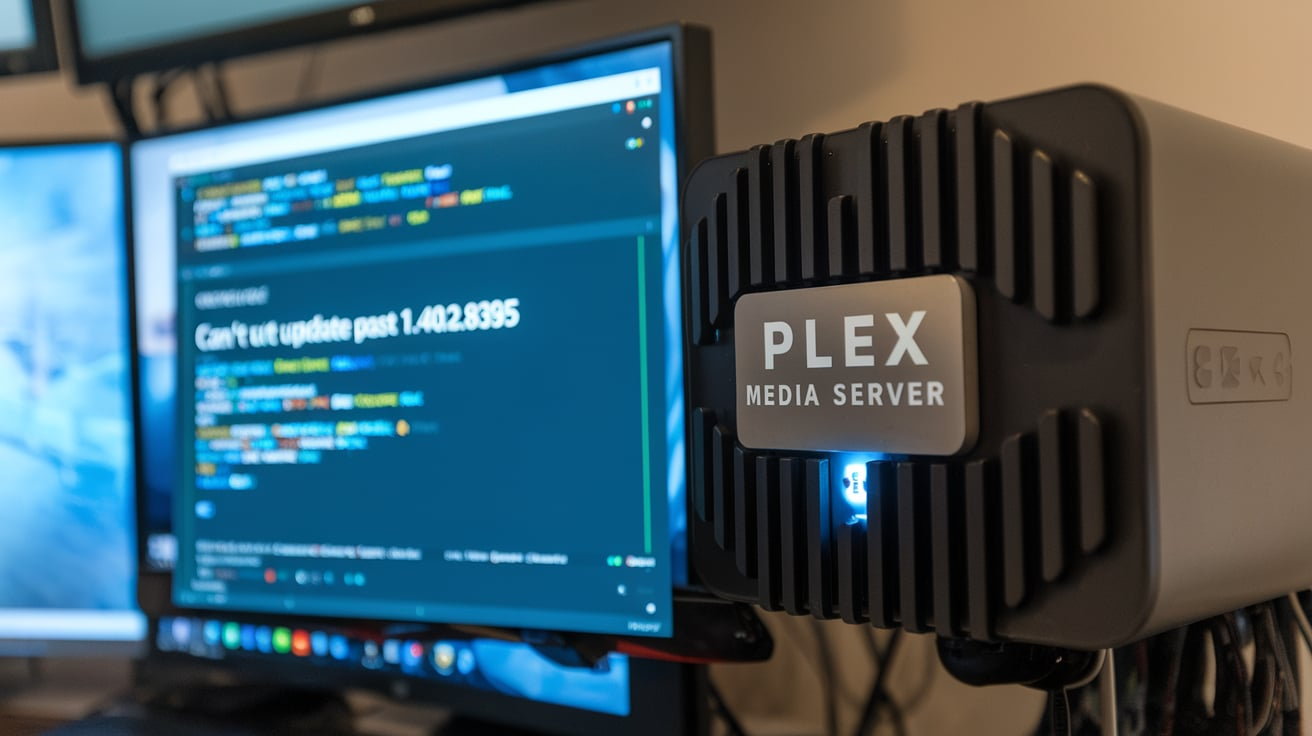Introduction
When dealing with the issue that Plex can’t update past 1.40.2.8395, it’s essential to understand potential causes and solutions. This issue might stem from compatibility limitations with specific devices, outdated operating systems, or network restrictions that block Plex from accessing its update servers. Users facing this issue often experience a halted update process, preventing them from accessing the latest Plex features and fixes. To troubleshoot effectively, users should verify system compatibility, adjust network settings, and consider manually installing the latest Plex version if automatic updates remain stuck at 1.40.2.8395.
Understanding Why Plex Can’t Update Past 1.40.2.8395
It can be confusing and frustrating when users encounter the problem where Plex can’t update past 1.40.2.8395. This issue often occurs due to system compatibility problems or outdated device software. Some devices or older operating systems may no longer support the latest Plex updates, halting the process. Ensuring that your device meets Plex’s latest requirements can sometimes resolve this. Checking these factors is essential to identify why Plex is stuck at version 1.40.2.8395.
Device Compatibility Issues Affecting Plex Updates
One common reason Plex can’t update past 1.40.2.8395 is compatibility limitations on specific devices. Older hardware may lack the resources to run updated versions of Plex smoothly. This restriction is widespread in legacy devices without manufacturer support. By verifying your device’s compatibility with the latest Plex specifications, you may better understand why updates aren’t working. Compatibility is critical to accessing all the latest features Plex has to offer.
Operating System Requirements and Update Limitations
Sometimes, the reason Plex can’t update past 1.40.2.8395 lies within the operating system itself. The software may halt at an older version if the OS is outdated or doesn’t support recent Plex updates. Upgrading your OS can sometimes resolve this issue and allow Plex to continue updating. However, if an OS update isn’t possible, you may be limited to using Plex version 1.40.2.8395 or earlier. Understanding your OS limitations can help you determine your options.
Network Restrictions Blocking Plex Updates
Network permissions can be another reason Plex can’t update past 1.40.2.8395. Firewalls, antivirus software, or network security settings may prevent Plex from connecting to its update servers. This can stop the update process mid-way or block it entirely. To troubleshoot, check your firewall and antivirus settings and your router’s configuration to ensure Plex is allowed full internet access. By adjusting these settings, you may be able to resume updates beyond 1.40.2.8395.
Checking for Server Issues When Plex Won’t Update
In some cases, Plex can’t update past 1.40.2.8395 due to issues with Plex’s servers. If Plex’s servers are experiencing downtime or technical difficulties, users may temporarily be unable to update. This problem is usually resolved by waiting until Plex restores full functionality on their servers. To check for updates, visit Plex’s status page or community forums for announcements. Patience may be the only solution if server issues are the root cause.
Manual Update as a Solution for Plex Update Problems
If Plex can’t update past 1.40.2.8395 automatically, a manual update may be a viable solution. Downloading the latest Plex version directly from the official website lets you install it without relying on the app’s built-in updater. This process bypasses any automatic update issues and provides the latest version directly. While this method requires more effort, it’s often effective when other update options fail. A manual installation can quickly resolve update limitations.
Troubleshooting Tips if Plex Can’t Update Past 1.40.2.8395
When Plex can’t update past 1.40.2.8395, several troubleshooting steps can help identify the problem. Start by ensuring that your device’s OS is up-to-date and that all system requirements for the latest Plex version are met. Check your network settings to ensure Plex can connect to its update servers without restrictions. If these steps don’t work, consider manually installing the latest version. Following these troubleshooting tips can often resolve the update issue.
Importance of System Requirements for Plex Updates
System requirements are crucial, significantly if Plex can’t update past 1.40.2.8395 on your device. Plex regularly updates its platform, which means the latest versions may require more advanced hardware or software. Devices no longer meeting these requirements are more likely to experience update restrictions. Before updating, reviewing Plex’s system requirements ensures that your device has the necessary specifications. Meeting these requirements is essential for smooth updates.
Standard Error Messages When Plex Fails to Update
Users may encounter specific error messages if Plex can’t update past 1.40.2.8395. Messages like “Update Failed” or “Device Not Supported” often signal issues related to compatibility, OS restrictions, or connectivity. Understanding these error messages can explain the underlying problem and guide your troubleshooting efforts. Each message typically points to a specific cause, making it easier to address the reason behind the failed update. Recognizing these messages can streamline the solution.
Keeping Up with Plex Community Updates on Version Issues
When Plex can’t update past 1.40.2.8395, consulting Plex’s community forums or support resources can be beneficial. The Plex community often shares insights, troubleshooting advice, and possible solutions for common issues like failed updates. Additionally, Plex developers may announce known issues and updates on their forums, providing helpful information directly. Staying informed through these community channels ensures you know of any widespread problems affecting updates.
Conclusion
When Plex can’t update past 1.40.2.8395, several factors, such as device compatibility, operating system limitations, or network restrictions, may be at play. Identifying the root cause—whether it’s a system requirement, network permission, or Plex server issue—can help users resolve the problem. Manual installation and checking the Plex community forums for insights can also be effective solutions. Addressing these issues ensures continued access to Plex’s latest features and improvements.
